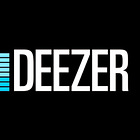Spotify's $1.5 Billion Profit in 2024 | A Win for Executives, As Artists Struggle
The Rise of Spotify's Profitability...
Spotify, the world’s largest music streaming platform, closed 2024 with a landmark achievement:
Its first full year of operating profit, totalling €1.4 Billion OR $1.5 Billion.
This milestone came alongside an impressive growth in its “Premium” Subscriber base, which reached 263 million paying users by the end of Q4, an 11% year-over-year increase. Monthly Active Users (MAUs) also surged to 675 million globally, a 12% rise compared to the previous year.
The company’s financial performance was driven by several factors:
A steady increase in Premium revenue, which hit €3.705 billion ($3.957 billion) in Q4 2024, up 19% year-over-year.
An Average Revenue Per User (ARPU) increase of 7%, attributed to price hikes and market dynamics.
Cost efficiencies, including lower personnel and marketing expenses.
Spotify’s CEO Daniel Ek expressed optimism about the company’s trajectory, emphasizing its focus on long-term growth and innovation.
However, while Spotify’s Executives and Shareholders celebrate these Financial gains,
The Story is starkly different for the Artists who fuel the platform’s success.
The Artist Dilemma | Struggle Amidst Corporate Success
Despite Spotify’s record-breaking profitability, many artists continue to face challenges in earning a sustainable income from streaming. The platform operates on a pro-rata payment model, where revenue is pooled and distributed based on total streams. This system disproportionately benefits top-tier artists and leaves smaller creators with minimal payouts.
Key Issues for Artists:
Low Per-Stream Payments: On average, Spotify pays between $0.003 and $0.005 per stream. For an artist to earn $1,000, they would need approximately 250,000 streams; a daunting target for independent musicians.
Revenue Allocation Inequities: The pro-rata model means that even if fans exclusively listen to one artist, their subscription fee is divided among all artists based on total streams across the platform.
Rising Costs for Artists: As Spotify increases subscription prices to boost ARPU, listeners expect higher-quality & quantity of content from artists who are already struggling with limited resources.
This disparity highlights a growing tension in the music industry:
While platforms like Spotify achieve unprecedented Profits, the Creators who generate the content see little to NO Improvement in their Financial circumstances.
The Executive Advantage
Spotify’s executives have reaped significant benefits from the company’s success. The €477 million ($509 million) operating income in Q4 alone reflects cost-cutting measures such as reduced personnel expenses and marketing budgets. These savings likely contributed to executive bonuses and shareholder returns.
Moreover, Spotify's focus on automation and efficiency, such as automated ad sales channels; has further streamlined operations and boosted profitability without directly addressing artist compensation concerns.
What Needs to Change? | What is Vinyl Culture Working On?
To bridge the gap between artist welfare and corporate success, several changes could be considered:
1. Adopting a User-Centric (or a Hybrid) Payment Model
Under this model, subscription fees would be distributed based on individual listening habits rather than total streams across the platform. This approach could ensure that smaller artists receive a fairer share of revenue from their dedicated fans.
2. Increasing Transparency
Artists often struggle to understand how their earnings are calculated. Greater transparency in a Streaming Service’s revenue-sharing mechanisms could build trust and help creators plan their careers more effectively.
3. Advocating for Higher Payout Rates
While Spotify has increased ARPU through price hikes, these gains have not translated into higher per-stream payments for artists. Allocating a larger portion of revenue to creators could address this imbalance.
4. Supporting Independent Artists
New Streaming Services should introduce initiatives specifically aimed at supporting independent musicians, such as grants or promotional opportunities that don’t rely solely on algorithmic recommendations.
Conclusion | A Call for Balance
Spotify’s $1.5 billion annual profit marks a significant milestone in its journey as a business powerhouse. However, this success comes with ethical questions about fairness and sustainability in the music industry. As executives enjoy record profits and subscribers “benefit” from an expansive music library,
Artists, who are the backbone of the platform; Continue to struggle financially.
The time has come for Spotify & other streaming services to re-think their relationship with creators and take meaningful steps toward equitable revenue distribution. If they fail to address these concerns, it risks alienating the very community that drives their success.
What do YOU think? Should Spotify adopt a user-centric model or increase artist payouts? Share YOUR thoughts in the comments below! 💬
If you’re passionate about fair compensation for artists, consider supporting your favourite musicians directly through merchandise or live shows, and let your voice be heard by sharing this article!
Join us at Vinyl Culture as we continue exploring ways to preserve and evolve authentic Music Culture in an age dominated by algorithms and corporate interests. Together, we can make a difference.🫱🏼🫲🏽
Read More Here📚🔗:










How much more money does Daniel Ek and Spotify need before they become the Elon Musk villain of the music industry? They have literally been biting the hand that feeds them since Spotify’s inception. The sad thing now is that AI ghost artists are making their ‘evildoing’ easier. They don’t want a future with creative musicians who rightly deserve to be compensated. Who needs them or even has to pay them when AI can do it for them in yet another anonymous playlist? Again, how much money do they need? The other platforms operate on similar principles but at least they have higher audio quality to the listener. Spotify doesn’t even do that. And in case you missed it earlier, again, how much money do they need? Sadly I think we all know the answer. Thanks for the post.